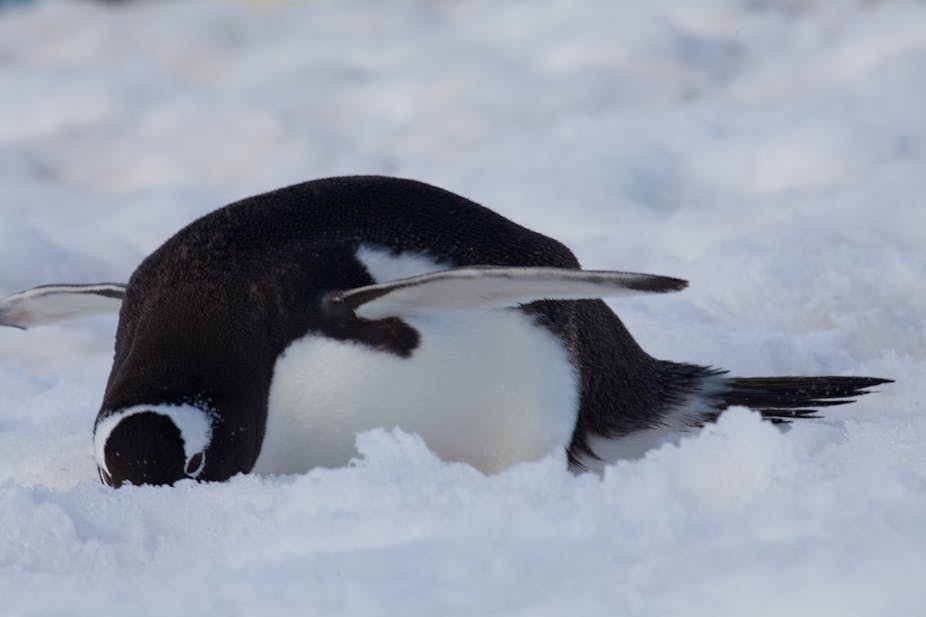Life is hardier than was thought only a few decades ago. With the help of new exploration technologies and new methods for finding and identifying organisms, our perceptions of what constitute the environmental limits for life on Earth have changed.
You can find life in extreme environments be it acid or alkaline, or extremely hot or cold. It can be found under high pressure, without free water (in hot and cold deserts), in extremely salty environments (like the Dead Sea), and in areas that lack oxygen or experience high radiation levels.
We now recognise that microbial life can exist in most extreme environments on Earth. So it should not be a surprise that, in a study just published in Nature, researchers report the first direct evidence of life in a lake located almost a kilometre below an ice sheet in Antarctica.
Lakes under ice
The presence of liquid water below the Antarctic ice sheet was recognised more than 40 years ago. The ice provides an effective “duvet”, trapping the heat naturally emitted through the Earth‘s crust. However, the presence of a sub-glacial lake, formed from extensive melting of ice at the base of the ice sheet, was only confirmed in the 1990s.
The subglacial Lake Vostok is among the top ten largest lakes in the world. But the difficulties of reaching it through kilometres of ice makes it one of the most isolated environments on Earth.
Since Vostok’s discovery, more than 350 smaller lakes have been located in Antarctica. The presence of subglacial lakes under the Greenland ice sheet have now also been detected. Vostok is not, therefore, a one-off example of an extreme environment. Instead, it is the largest example of a group of aquatic environments that can be potentially found wherever glaciers and ice sheets are present.
There is growing evidence that many of the Antarctic lakes are connected by a network of channels. These channels control the flow of overlying ice streams, and liquid water at the base of ice sheets lubricates the passage of ice. The lakes associated with ice streams are thought to act as reservoirs for this lubrication process, filling and partly emptying on a fairly regular basis so the water in the lake is replaced every few years. Other subglacial lakes, including Lake Vostok, appear to be much more static – the water in these lakes may only be replaced over tens of thousands of years, leaving them very stable environments.
Eating metal
Subglacial Lake Whillans, described in the study, is an example of a dynamic subglacial lake. It receives no light to support photosynthesis, has constantly low temperatures (just a little below zero) and is under pressure eighty times atmospheric pressure due to the 800m of overlying ice.
With relatively frequent changing of the lake water the availability of organic matter, which humans and many other life forms – collectively termed heterotrophs – use for energy and growth will be limited. The only things that can support the heterotrophs in this ecosystem are the underlying ancient seabed geology, which can provide small amounts of organic carbon from the rock material and the recycling of carbon from dead microbes. Thus, what a dynamic subglacial ecosystem such as this needs to really succeed is to also use the much more plentiful non-organic energy sources.

But to get there the researchers first needed to drill. For that, they created a 30cm wide borehole through the ice using a hot water drill and then deployed custom-built probes to make measurements and obtain water and sediment samples. Contamination was prevented by preparing the samplers and instruments in ultra-clean rooms, cycling the hot water through a customised multistage filtration system and preventing drill water from getting into the lake. Avoiding contamination is essential to ensure that only microbes from the lake are recovered and that modern contaminants do not get into the subglacial network of lakes and channels.
When the samples were analysed, they found that the lake contained organisms from of both bacteria and archaea trees of life. While some of the organisms could be identified from gene databases as also occurring elsewhere, particularly in cold environments, many of the lakes microbes appear to be completely new. Along with a range of heterotrophic microbes, the most prevalent organisms were those that can consume inorganic chemicals, such as iron, manganese, sulphur and especially, nitrogen (or, more precisely, nitrogen in the form of ammonium ions). These organisms are called chemoautotrophs.
The “chemoautotrophic” lifestyle is representative of the earliest life on Earth. This existed long before photosynthesis created an oxygen-rich world and powered the explosion of biological diversity and organic carbon biomass to support the heterotrophic lifestyle dominating the modern Earth.
Some of these microbes may well have enzymes and novel chemicals that can be exploited for commercial purposes. But, more importantly, these lakes give us an opportunity to study and understand how life existed at various times on the early Earth and dealt with the challenges of environmental extremes. They also provide insights to how life could exist on other planetary bodies, including Mars and the moons of Saturn and Jupiter.

